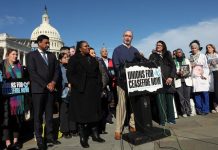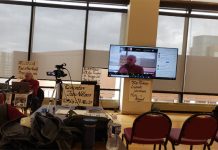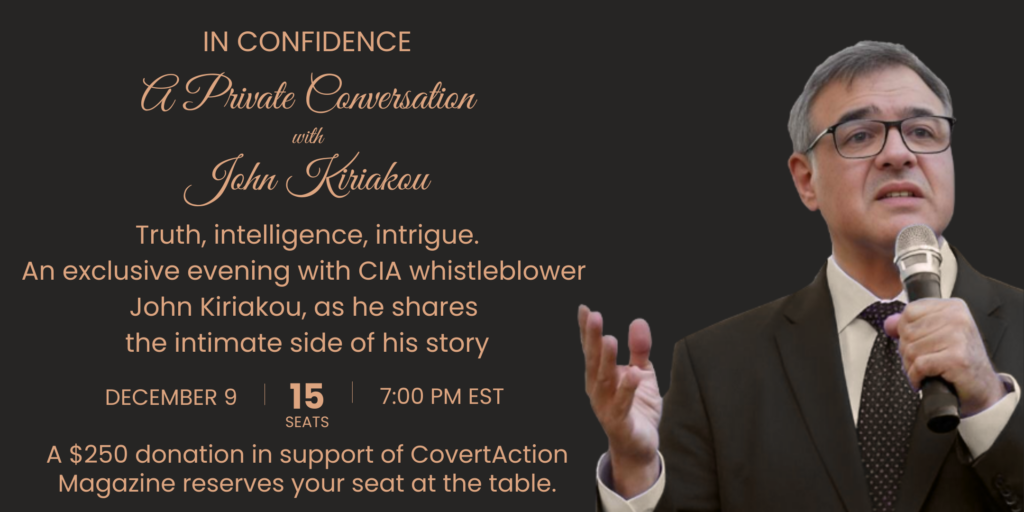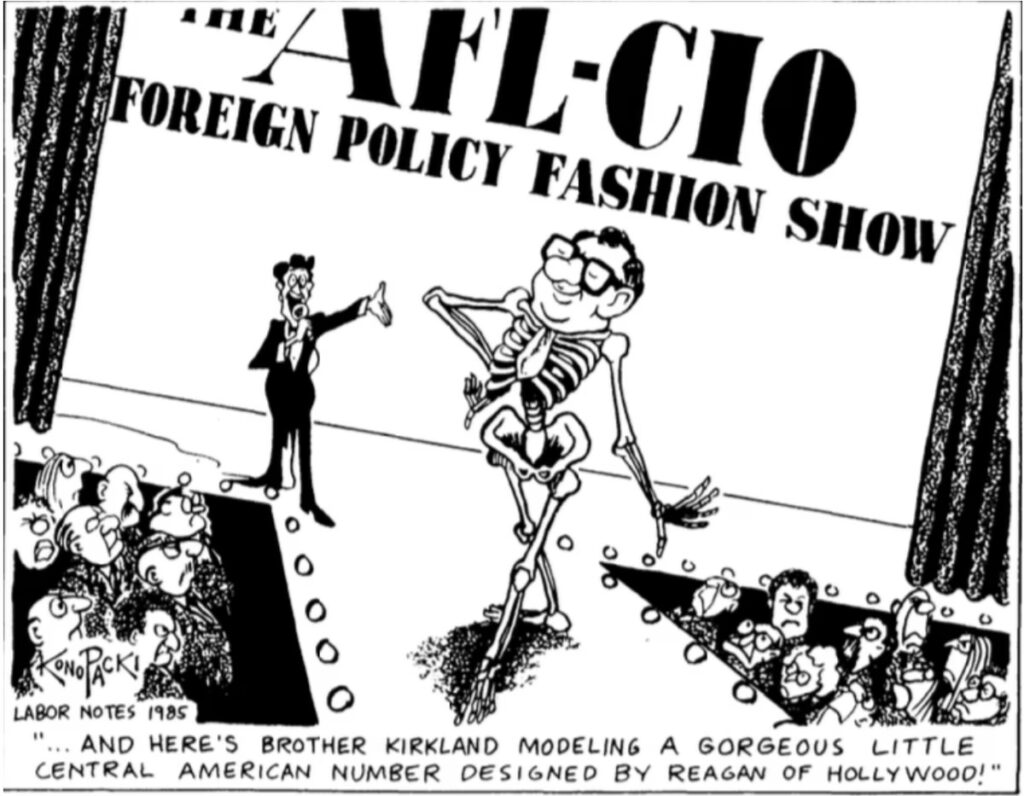
Reckoning with the past is crucial to establishing greater effectiveness in the present
At their July 2004 state convention, the California State American Federation of Labor and Congress of Industrial Organizations (AFL-CIO) passed a resolution demanding that AFL-CIO leaders “clear the air” about AFL-CIO’s history of trying to undercut radical labor unions in foreign countries, and calling for restrictions on U.S. government funding and any connection to CIA-affiliated organizations like the National Endowment for Democracy (NED).
The Build Unity and Trust measure was spearheaded by Fred Hirsch (1933-2020), a plumber from San José and AFL-CIO member who helped expose the role of the American Institute for Free Labor Development (AIFLD) in the 1973 fascist Chilean coup in a pamphlet that he wrote, An Analysis of Our AFL-CIO Role in Latin America or Under the Covers with the CIA (1974).
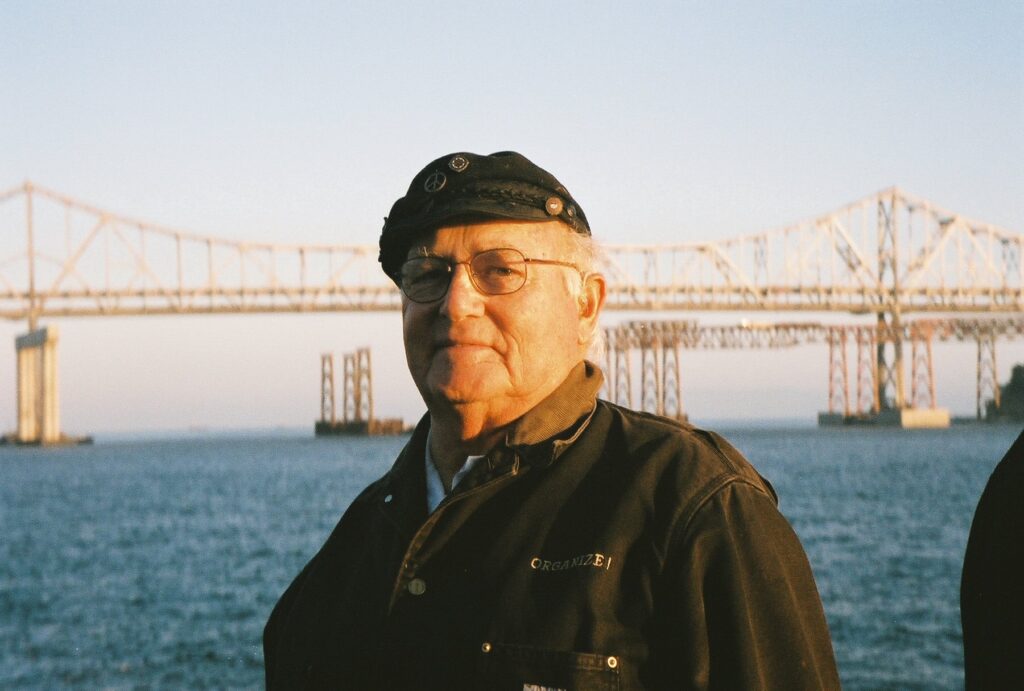
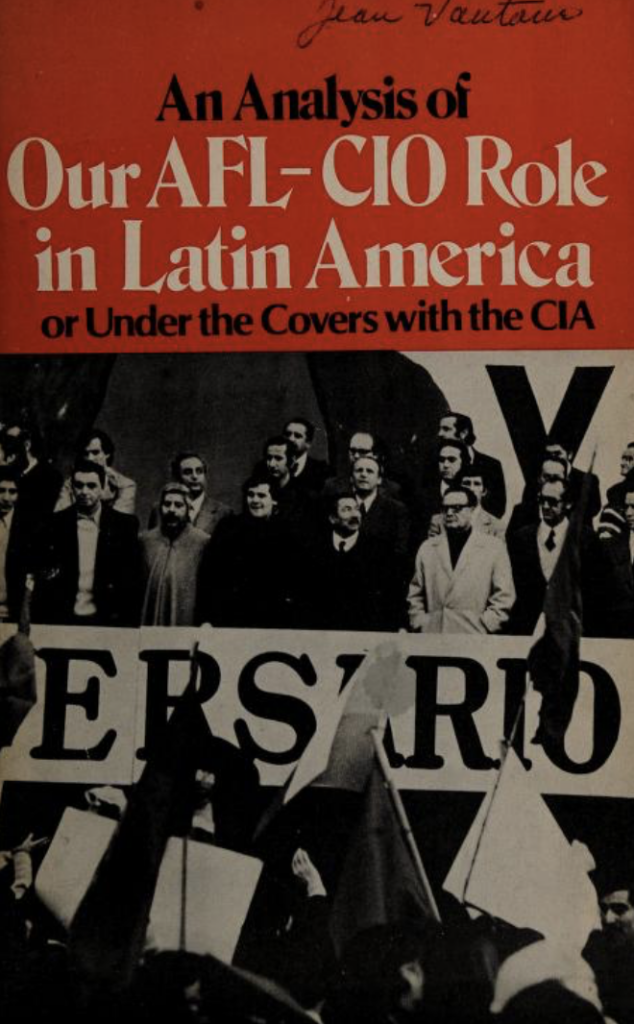
AIFLD was a Cold War political instrument set up by the AFL-CIO in 1962 with funding from the USAID that established training centers where foreign labor leaders were instructed on how to combat left-wing influences in their unions.
AIFLD also used USAID funds to carry out development projects across Latin America, including the construction of affordable worker housing for members of anti-communist and pro-U.S. unions, giving them an advantage in recruitment over any radical rivals.[1]
In Chile, AIFLD-trained operatives coordinated a truckers’ strike as part of the Nixon administration’s campaign to cripple Chile’s economy and bring down the government of Salvador Allende, a democratically elected socialist who had moved to nationalize Chile’s copper mines (previously owned by U.S. companies Anaconda and Kennecott).[2]
The Build Unity and Trust measure was blocked at the 2005 AFL-CIO convention and has not been revitalized since then. However, in a break from precedent, then-AFL-CIO President Richard Trumka condemned a November 2019 coup ousting Bolivian socialist President Evo Morales, whom Trumka praised for reducing poverty and championing Indigenous rights.[3]
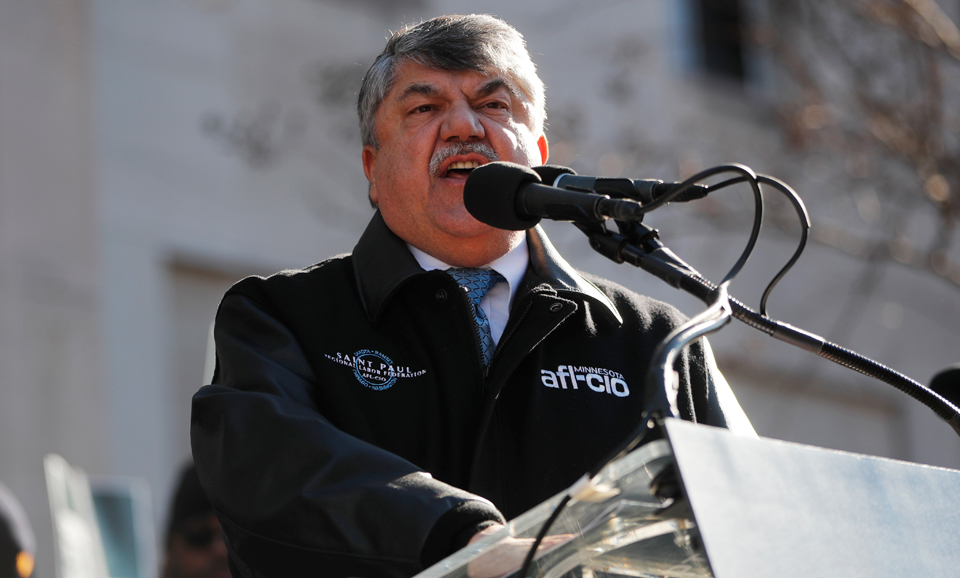
With an ascendant labor movement today, it would be a good time to revitalize the Build Unity and Trust measure and for the AFL-CIO to openly acknowledge its past mistake in allying with the U.S. foreign policy establishment during the Cold War.
Blue Collar Empire
The sordid history of AFL-CIO collaboration with the CIA and support for imperialist interventions during the Cold War is detailed in Jeff Schuhrke’s new book, Blue Collar Empire: The Untold Story of US Labor’s Global Anticommunist Crusade.

Schuhrke is a labor journalist and historian who is assistant professor at the Harry Van Arsdale Jr. School of Labor Studies, SUNY Empire State University, in New York City.
He starts Blue Collar Empire by describing how, after he gained election as president of the American Federation of State, County and Municipal Employees (AFSCME) in April 1964, Jerry Wurf—who stood shoulder-to-shoulder with Martin Luther King, Jr., during the 1968 Memphis sanitation workers’ strike—received a visit from some CIA agents.
They tried to talk him into continuing an arrangement by which AFSCME received CIA money to help organize and finance anti-communist, pro-U.S. trade unions in Latin America since at least 1958.[4]
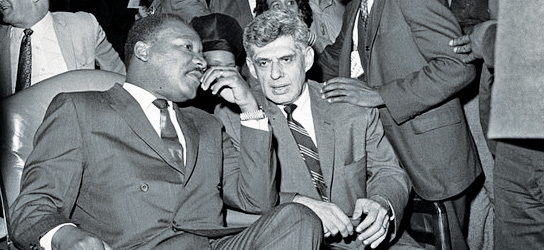
Not wanting his union to be an arm of the U.S. foreign policy apparatus, Wurf refused the request. Three years later in 1967, The New York Times and Washington Post published articles highlighting how the CIA had provided $1 million to the AFSCME to support an eight-day general strike in Guyana among Afro-Guyanese workers with the aim of destabilizing its democratically elected government led by leftist Cheddi Jagan.
Jagan had sought to lead Guyana through its planned transition to full independence from the British and implement socialist reforms like nationalizing the sugar industry. President John F. Kennedy, however, was determined to see Jagan removed from power before Guyana became independent. The labor strike, coordinated by AFSCME at the behest of the CIA, helped bring Guyana’s economy to a standstill—much like Chile in the early 1970s—leading to shortages of food and fuel while scaring away potential foreign investors.
Jagan supporters who refused to support the strike were physically attacked as incendiary anti-Jagan propaganda was spread in the AFL-CIO/CIA-funded media. The following year, in an election rife with U.S. meddling, Jagan and his leftist party were voted out of power.[5] Jagan’s replacement, Forbes Burnham, continued to stoke ethnic conflict between Afro-Guyanese and Indians who supported Jagan while ruling dictatorially for the next three decades.
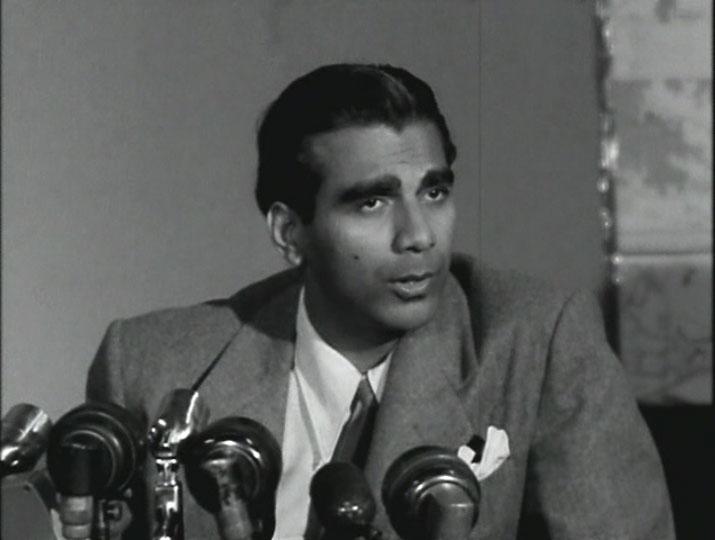
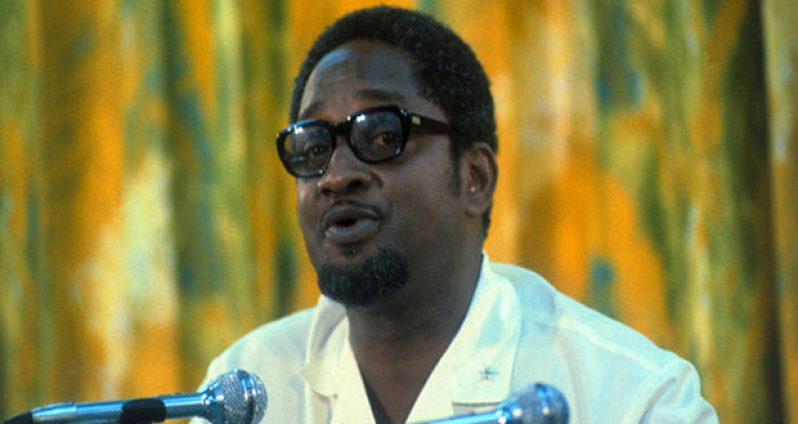
Schuhrke uses the case of Guyana to illustrate the pernicious role that American unions who were in league with the CIA played during the Cold War. Schuhrke writes that, on a broader scale, “the same twentieth-century American labor movement that brought a measure of economic security and personal dignity to millions of working people also participated in some of the most shameful and destructive episodes in the history of U.S. imperialism.”[6]
Bolstered by union protections instituted under the New Deal’s Wagner Act, the labor movement enjoyed “unprecedented political clout and economic muscle”[7] at the beginning of the Cold War, which it should have used to try to advance the long-term well-being of the working class by advocating for a robust welfare state and hindering militarism.
Instead, by shunning and purging some of the most dedicated and militant unionists who were left-of-center politically and working to undermine leftist unions abroad, the AFL-CIO and other unions helped lay the groundwork for organized labor’s near decimation at the end of the 20th century.
Gompers Sets a Key Precedent
Schuhrke roots the AFL-CIO’s support for U.S. imperialism to AFL founder Samuel Gompers’ decision to defect from the anti-imperialist league at the turn of the 20th century and to back the formation of pro-U.S. unions in newly acquired U.S. territories, especially Puerto Rico.
Supporting construction of the Panama Canal, which was designed to expedite the transportation of Latin American raw materials to the U.S., Gompers and the AFL made no protest when U.S. Marines invaded and occupied Haiti, the Dominican Republic and Nicaragua.[8]
Gompers further partnered with the Wilson administration in its efforts to tame the radical impulses in the Mexican revolution that wanted to nationalize American-owned businesses by organizing a Pan-American labor organization founded on the principles of business unionism.[9]
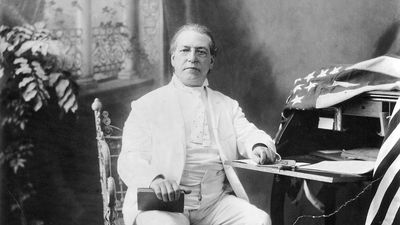
To win labor’s support for U.S. intervention in World War I, Wilson appointed Gompers to the War Labor Board—an agency created to arbitrate industrial disputes in war production industries—which led to improvements in workers’ pay and conditions and boosted union membership rates.
As part of the quid pro quo, however, Gompers stood by as the Wilson administration carried out a campaign of repression against the Industrial Workers of the World (IWW) and other union radicals who opposed U.S. involvement in World War I.
Though sympathetic to Marxism in his youth, Gompers had become hostile to socialists whom he considered to be “hopelessly utopian” and called the Bolsheviks, who engineered the 1917 Russian Revolution, “pirates” who “raised the black flag over helpless Russia and declared war upon the established order about which the fabric of civilized life had been woven.”[10]
Gompers’ close collaboration with the Wilson administration—which illegally invaded Russia in an attempt to overthrow the bolshevik revolution—set the groundwork for AFL-CIO practices during the Cold War.
After Gompers’ death in 1924, the AFL’s leadership aggressively moved to drive communists and their sympathizers from the organization in a process replicated in the CIO before its 1955 merger with the AFL. During World War II, militant tactics like sit down strikes and slowdowns, which had won industrial workers newly found shop-floor strength in the 1930s, were suddenly derided as unpatriotic.
Top CIO officials, like Walter Reuther of the United Auto Workers (UAW), became convinced that the main area of labor struggle had shifted from the factory floor to the halls of Washington, where they expected to participate in economic planning alongside government bureaucrats and corporate managers.[11]
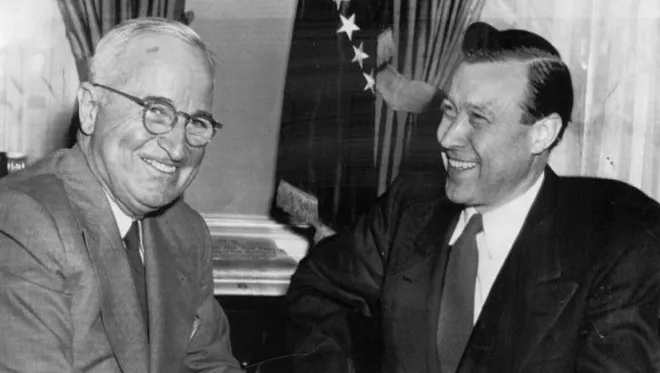
This viewpoint, combined with a fervent anti-communism, led to the organized labor movement’s fateful alliance with the CIA and support for imperialism.
Meany and Lovestone
The AFL-CIO’s first president, George L. Meany (1955-1979), was a one-time leader of the United Association of Journeymen Plumbers and a zealous anti-communist from the Bronx who helped spearhead the AFL-CIO’s involvement in the global anticommunist crusade.
Meany worked in his overseas pursuits through the CIA-funded Free Trade Union Committee (FTUC), which was part of the AFL-CIO’s “Cold War army” overseen by Frank Wisner, a former Wall Street lawyer who headed the CIA’s clandestine wing after the CIA’s founding in 1947.[12]
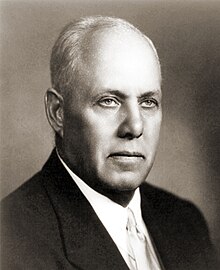
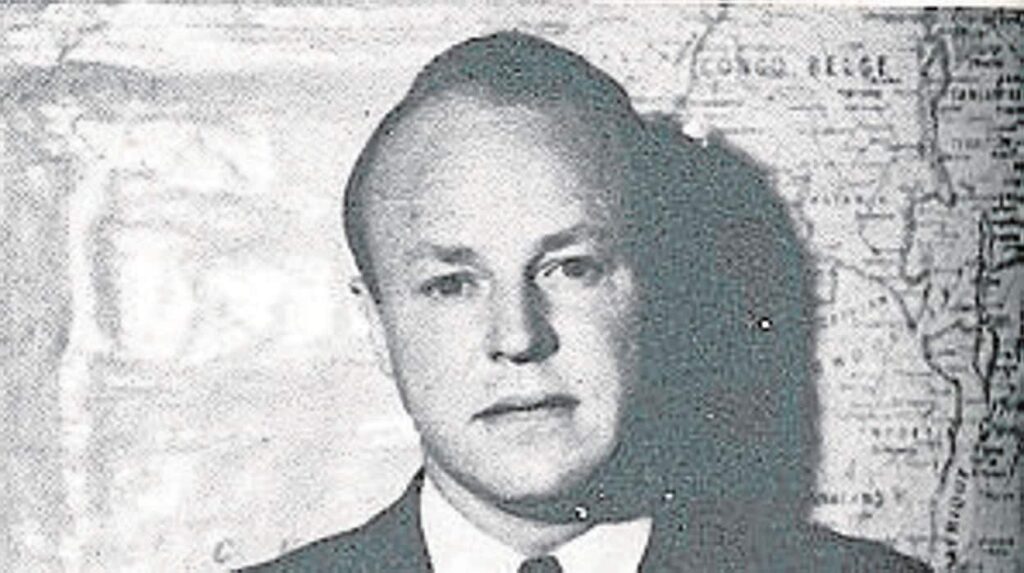
The FTUC’s mission was to carry out the CIA’s anti-communist mandate by infiltrating foreign labor unions in order to purge radical leftists and, in turn, supply the CIA with much-needed intelligence about foreign labor movements.
Meany worked hand-in-glove with Jay Lovestone, a founder of the Communist Party USA (CPUSA) and chief party propagandist who turned hard to the right after being excommunicated from the CPUSA by Soviet leader Joseph Stalin after allying with Stalin’s Politburo rival Nikolai Bukharin.[13]
Lovestone’s covert warfare skills were first developed during his tenure as a Communist Party operative when he learned to “correspond in code and hatch and unravel conspiratorial plots.”[14]
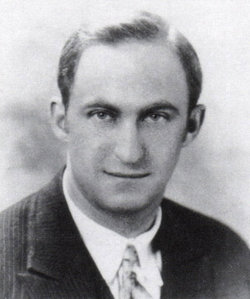
During the late 1930s, through deft maneuvering, Lovestone succeeded in pushing leftists out of the UAW, prompting Walter Reuther’s younger brother Victor to call him one of “the most Machiavellian union splitters ever to prey on the American labor movement.”[15]
In World War II, Lovestone helped the Office of Strategic Services (OSS) coordinate anti-fascist operations in unions and supplied information to the OSS and then CIA on foreign labor movements and the international left,.[16] As the Cold War took root, Lovestone was tapped by the FTUC to combat the growth of communist influence in the international labor movement—a task at which he succeeded because of his intimate knowledge of how the communists allegedly operated and thought.
Dirty Work in Western Europe
Lovestone’s most trusted lieutenant was Irving Brown, who had helped him in the 1930s’ purge of leftists at the UAW and worked as a labor adviser for the U.S. Foreign Economic Administration (FEA). Receiving $2 million per year from the CIA through the French embassy in Paris, Brown worked with conservative labor leaders in the late 1940s to split the largest French union (General Confederation of Labor-CGT) by purging the communists and leftists who were against the Marshall Plan and nascent Cold War.[17]
According to Schuhrke, Brown would travel around Europe carrying suitcases full of CIA money to buy unionists’ loyalty.[18] Some of the payoffs went to Pierre Ferri-Pisani’s network of Corsican gangsters for the purpose of breaking communist-led strikes, including one led by dock workers who had planned to disrupt shipments of NATO-supplied arms bound for Indochina.[19]
Time magazine reported that a communist who ran afoul of Ferri-Pisani’s thugs was “chucked into the harbor” while an anti-communist longshoreman boasted that he threw 4,400 men into the port of Marseilles during the dispute.[20]
Despite the dirty tactics, France became a model for U.S. Cold War policies. Ferri-Pisani’s CIA-funded outfit was upgraded to become the regional vigilance committee for the Mediterranean with affiliates in Italy, Greece, Algeria, Tunisia, Morocco and Malta.
Through a Swiss bank account Pisani received $10,000-$34,000 a month from the CIA while Corsican syndicates working with him built a vast international heroin trafficking network from Southeast Asia to the Mediterranean to North America termed “the French Connection.”[21]
In Italy, Brown teamed up with the State Department’s labor attaché, Tom Laneto, and split the Italian Confederation of Labor much as he had done the French, allying with Giulio Pastore, a Christian Democrat labor leader who was paid off handsomely by the CIA.
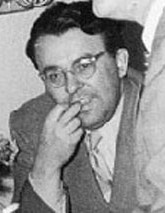
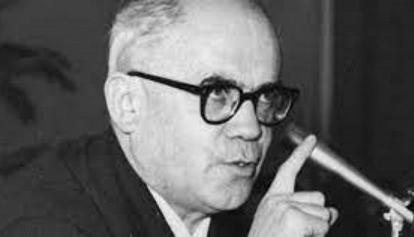
Brown also established a network of Eastern European emigres who maintained secret lines of communications with workers behind the Iron Curtain as pat of the CIA’s rollback operations, and used CIA funds to help establish the Congress for Cultural Freedom, which financed high-brow journals and helped transform respected intellectuals and artists around the world into ardent anti-communists.[22]
Cold War in Southeast Asia
In 1951, Lovestone sent Harry Goldberg to Indonesia with $30,000 in CIA money to divide and weaken a pro-communist union, SOBSI (Central Organization of all Indonesian Trade Unions), whose members were rounded up in violent anti-communist pogroms after General Suharto came to power in a CIA-backed coup in 1965.[23]
In Formosa (Taiwan), Lovestone agent Willis Etter advised pro-Guomindang union members from whose ranks the CIA recruited spies to infiltrate Mainland China and carry out espionage and sabotage activities.[24]
Supplied with radios, guns and explosives, the secret agents blew up storage tanks and aviation fuel on a mission in Shanghai, leading to fires that reportedly killed many civilians.
Another team infiltrated a state-run textile mill to stir up unrest among workers by making demands for bonus pay, while another tried to start a movement against the Chinese government’s conscription of soldiers to fight in Korea.
After CIA resources were shifted to Korea, the secret teams were left to fend for themselves and most of the agents were captured and executed by Chinese authorities.[25]
The episode demonstrated how frighteningly far the AFL-CIO had strayed from its core mission of supporting workers’ rights.
Latin America
A precursor to the campaigns to overthrow Cheddi Jagan and Salvador Allende was the 1954 Guatemalan coup where AFL members assisted the CIA’s efforts to overthrow leftist Jacobo Árbenz by pitting union members in an AFL-backed union against Árbenz and by financing their publication of an anti-Árbenz newspaper.[26]
George Meany wrote that the AFL “rejoiced over the downfall of the communist-controlled regime in Guatemala,” though Árbenz was not actually a communist and the victims of “white terror” by the new military junta included trade union activists. [27]
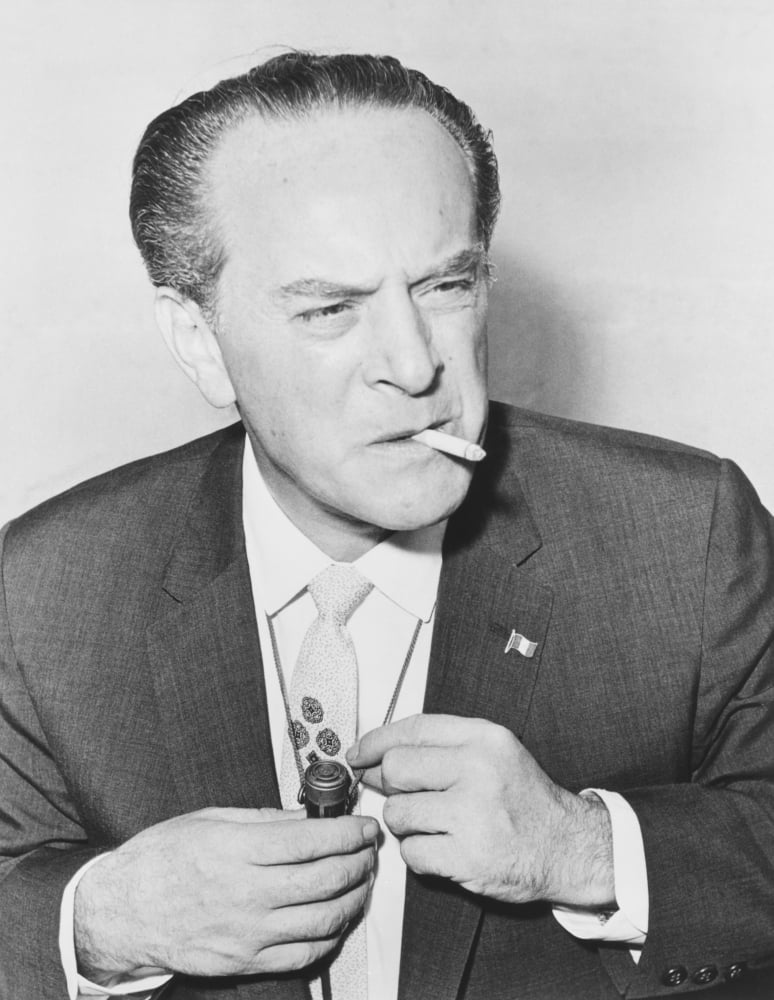
Many Latin American unionists were conditioned in anti-communist ideology at the AIFLD school, a labor counterpart of the U.S. Army School of the Americas and International Police Training Academy in Washington that was also kickstarted by the Kennedy administration.[28]
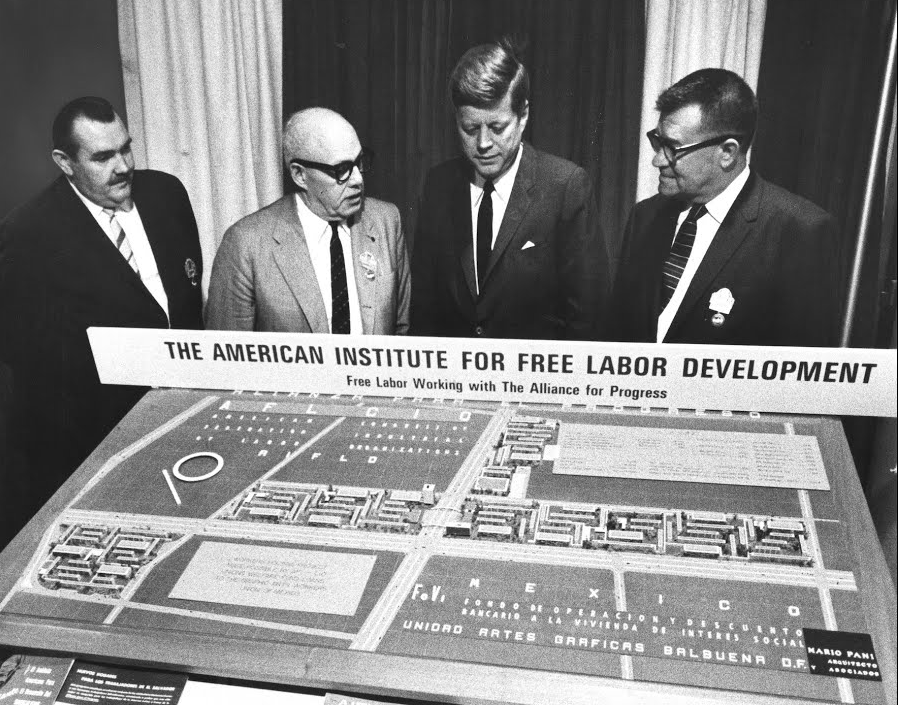
In early 1963, AIFLD sponsored a special Brazilian class of unionists who came back to help spark a coup against Joâo Goulart who had expressed interest in abolishing an anti-communist union favored by AFL-CIO/CIA with a new and independent labor confederation.[29]
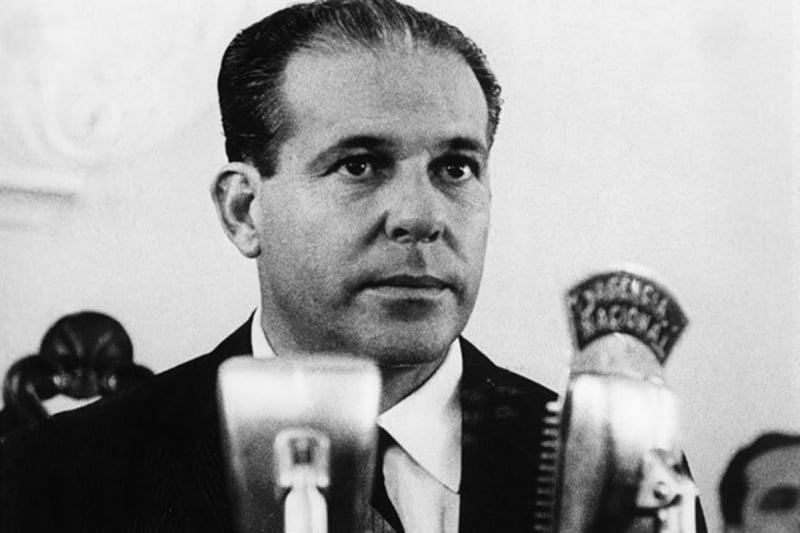
AIFLD graduate Romulo Teixeira Marinho of the Radio, Telegraph and Telephone Workers Union, played a particularly vital role in quashing a communist effort to defend Brazilian democracy by organizing a mass rally in defense of the constitution, and worked to ensure that communication wires were kept intact so the army could coordinate troop movements during the coup.[30]
AIFLD social projects director Bill Doherty, whom Phil Agee outed as a CIA agent, bragged in a radio interview that the coup in Brazil had been planned months in advance and that “many of our trade union leaders—some of whom were actually trained in our institute—were involved in the revolution, and in the overthrow of the Goulart regime.”[31]
That overthrow was far from heroic, however, as thousands of leftists were afterwards arrested, including union members and student activists like in Guatemala, and collective bargaining rights that had been established by Goulart were revoked.[32]
AIFLD quietly continued its training program and, according to U.S. Ambassador to Brazil (1973-1978) John Crimmins, rarely challenged the dictatorship even as union members were disappeared and tortured. Instead, AIFLD remained “fixated on anti-communism,” seeking to “train people who could, when the time came, confront the communists.”[33]
Vietnam
The AFL-CIO and its affiliates played a pivotal role in supporting U.S. foreign policy in Vietnam by financing the growth of anti-communist unions allied with U.S.-installed client regimes in South Vietnam.
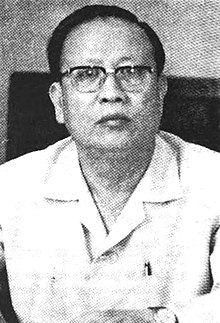
In 1961, Irving Brown was sent to South Vietnam on behalf of the AFL-CIO to help shore up its support for Tran Quoc Buu, an anti-communist union leader. Brown wanted to transform the union that he led into a paramilitary force to fight against the National Liberation Front (NLF-aka Vietcong).
George Meany’s support for the Vietnam War was displayed at the 1965 AFL-CIO convention in San Francisco when he removed anti-war protesters, whom he called “kookies.”[34] Nine years later, Meany ironically told Dick Cavett on live television that if he had known back in the 1960s what he knew now, “I don’t think we would have backed [the war].”[35]
Which Side Are You On?
In 1971, a New York playwright, Eric Bentley, openly criticized labor’s foreign affairs in his satirical musical, The Red White and Black: A Patriotic Demonstration, which included a song set to the classic union ballad “Which Side Are You On?” entitled “AFL/CIA.”
One passage read:
“George Meany was a worker
But he ain’t a worker no more
Instead he helps the government
To stir up hot ’n cold war
Which side are you on George?
Which side are you on.”

Another passage read:
“When Meany heard the workers
In foreign lands were red
He said: Let us explain to them
It’s better to be dead.”
A further passage asked:
“So how about it, fella?
Defend George if you can!
Are you CIO or CIA?
A Meany or a man?”[36]
Keeping the Dream Alive: Lane Kirkland and the NED
Meany’s hand-picked successor, Lane Kirkland (1979-1995), was a life-long friend of Henry Kissinger and other Washington power brokers.[37]
The South Carolinian acquiesced to Ronald Reagan’s domestic anti-union agenda, while supporting administration efforts to try to roll back communism in Central America.
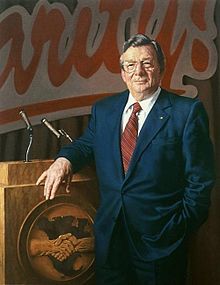
The AFL-CIO was active there in trying to steer union members away from radical leftist groups and supported center-right parties in El Salvador, which provided a cover for right-wing death squads targeting the left.[38]
In alliance with anti-union Republicans like Senator Orrin Hatch of Utah, Kirkland served as an adviser to the Reagan administration’s Project Democracy, which led to the founding of the National Endowment for Democracy (NED).
The NED performed overtly what the CIA had done covertly, notably the financing of right-wing, anti-communist unions and activist networks and media.[39]
A non-profit designated to receive a significant share of the NED’s grant money was the AFL-CIO’s Free Trade Union Institute (FTUI), which operated in Europe to increase U.S. influence with European trade unions.
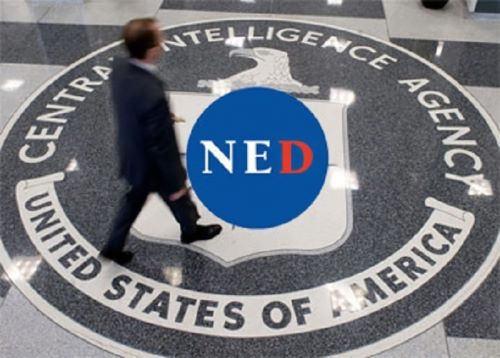
When the NED began operations in 1984, Kirkland was appointed to its Board of Directors along with an assortment of cold warriors and neo-conservatives.
In the run-up to the 1984 Panamanian elections, AIFLD gave $20,000 in NED money to Nicolás Ardito Barletta, the candidate backed by anti-communist strongman Manuel Noriega, who funneled arms covertly to the Nicaraguan Contras (CIA-backed counter-revolutionaries trying to overthrow the socialist Sandinista government).[40]
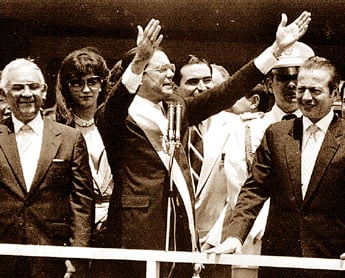
The NED also financed right-wing union groups in the Philippines, Poland and South Africa and separatist groups in the Balkans, and gave money to groups opposing France’s Socialist president François Mitterrand, who had invited the Communist Party into his governing coalition. The French groups included the same anti-communist union center that had been financed in the 1950s by the CIA through Irving Brown.[41]
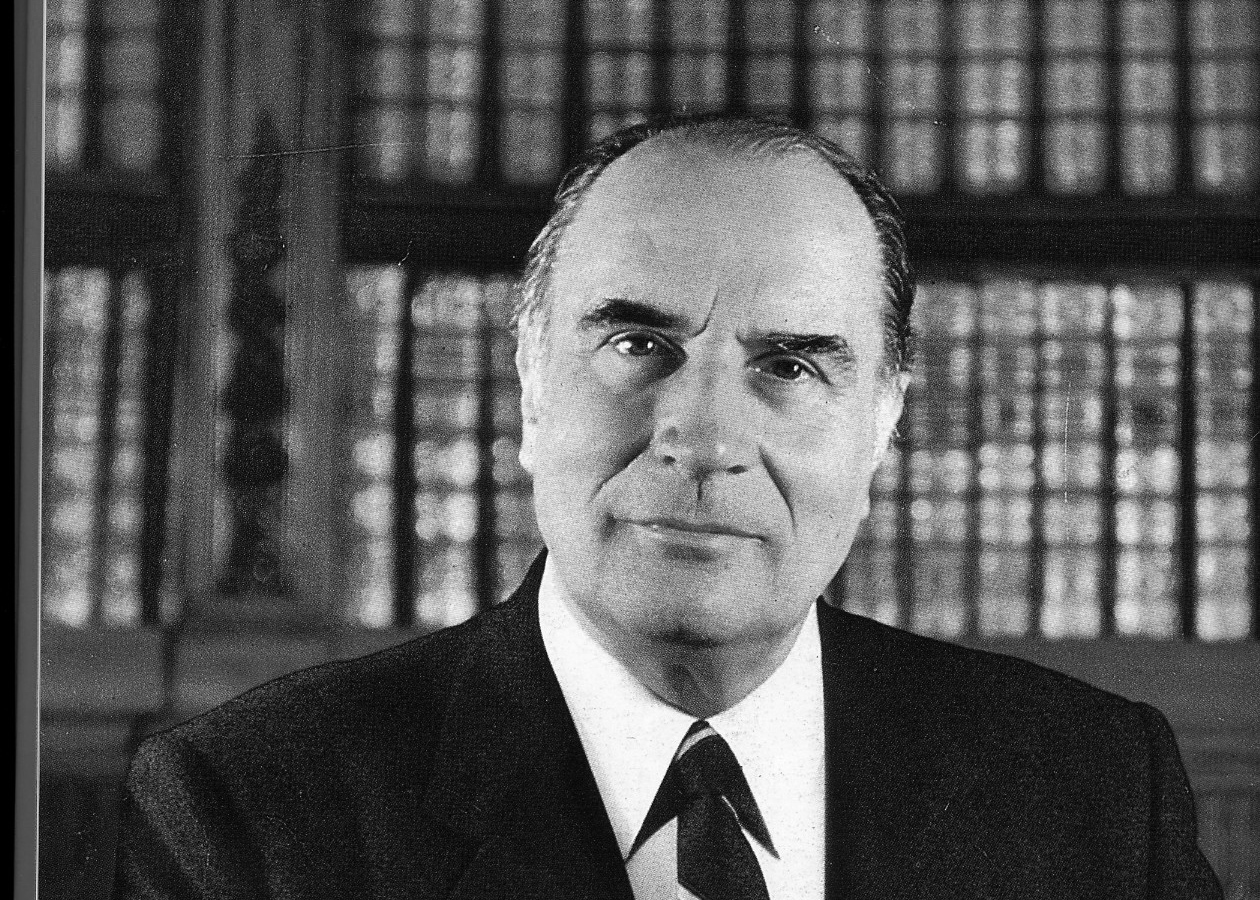
Continuity in the 21st Century
In 1997, the AFL-CIO created the Solidarity Center in place of AIFLD and other anti-communist foreign institutes.
Receiving heavy funding from Washington and the NED, it followed a historical pattern by supporting conservative union leaders who partnered with business leaders from the Venezuelan Chamber of Commerce to destabilize Venezuela’s socialist government led by Hugo Chávez.
The union leaders called a general strike during an April 2002 coup attempt and, after the coup failed, coordinated an oil industry lockout.[42]
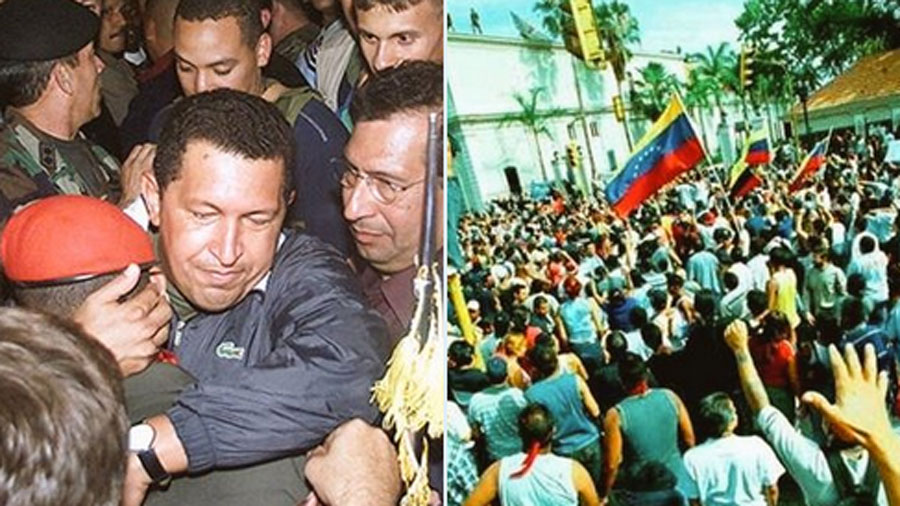
For years thereafter, the Solidarity Center persisted in supporting anti-Chávez groups with money from the NED.[43]
This latter relationship shows a disturbing continuity from the Cold War period.
Unions are most effective operating independently of the state in support of class struggle. When they collaborate with business elites in suppressing progressive movements, they betray their purpose and lose the capacity to be effective as a check on corporate power.
Labor’s revitalization cannot occur today without first reckoning with and repudiating past practices that were shameful and self-destructive.
Hirsch’s Build Unity and Trust measure should be revived, with the hope that the AFL-CIO leadership will have a newly found maturity resulting in their support for its passage.

Beneficiaries of the worker housing had to fill out detailed questionnaires about their political affiliations and backgrounds, which was used by the CIA. ↑
When Time correspondent Rudolph Rauch encountered striking truckers near Santiago enjoying a lavish communal meal of steak, vegetables, wine and empanadas, and asked where the money for the meal came from, the truckers laughingly answered: “From the CIA.” Jeff Schuhrke, Blue Collar Empire: The Untold Story of US Labor’s Global Anticommunist Crusade (Brooklyn, NY: Verso, 2024), 211. ↑
More recently though, AFL-CIO President Liz Shuler has supported U.S. intervention in Ukraine whose government has adopted anti-labor measures; Shuler claimed Russia carried out an unprovoked attack which is untrue. ↑
Schuhrke, Blue Collar Empire, 2. ↑
Schuhrke, Blue Collar Empire, 3. ↑
Idem. ↑
Idem. ↑
The Panama Canal was built after J.P. Morgan financed a secessionist movement in Panama to circumvent the Colombian government’s opposition to its construction. See Ovidio Diaz Espino, How Wall Street Created a Nation: J.P. Morgan, Teddy Roosevelt, and the Panama Canal (New York: Basic Books, 2003). ↑
Schuhrke, Blue Collar Empire, 14. ↑
Schuhrke, Blue Collar Empire, 16. ↑
Schuhrke, Blue Collar Empire, 20. ↑
Lovestone also developed a close relationship with legendary CIA operative James J. Angleton, to whom he supplied information on global labor affairs. ↑
Schuhrke, Blue Collar Empire, 31. ↑
Idem. ↑
Schuhrke, Blue Collar Empire, 33. ↑
Schuhrke, Blue Collar Empire, 33, 34. ↑
Schuhrke, Blue Collar Empire, 39, 75 ↑
Schuhrke, Blue Collar Empire, 75. ↑
Schuhrke, Blue Collar Empire, 76. ↑
Idem. ↑
Idem. ↑
Schuhrke, Blue Collar Empire, 78. ↑
Schuhrke, Blue Collar Empire, 79, 80. Schuhrke mentions a woman named Magdalena who joined SOBSI while working at a Jakarta t-shirt factory who was rounded up and then raped during the pogroms. She was subsequently marked for life as a subversive and lived the rest of her life in poverty. ↑
Schuhrke, Blue Collar Empire, 82. ↑
Schuhrke, Blue Collar Empire, 82, 83. ↑
Schuhrke, Blue Collar Empire, 92, 93. ↑
Schuhrke, Blue Collar Empire, 95. ↑
Schuhrke, Blue Collar Empire, 122. The U.S. Army School of the Americas was notorious for training coup plotters and killers. ↑
Schuhrke, Blue Collar Empire, 139. ↑
Schuhrke, Blue Collar Empire, 140. ↑
Schuhrke, Blue Collar Empire, 141. Agee also outed AFL-CIO official Andrew McLellan as a CIA agent in his book Inside the Company: A CIA Diary (New York: Penguin Books, 1975). ↑
Schuhrke, Blue Collar Empire, 141. ↑
Schuhrke, Blue Collar Empire, 143. Jay Lovestone defended the regime in Brazil, claiming that there was a distinction between “totalitarian dictatorships and military dictatorships like that in Brazil” because the latter supposedly “allowed unions a greater degree of autonomy than the former.” ↑
Schuhrke, Blue Collar Empire, 173. ↑
Schuhrke, Blue Collar Empire, 189. ↑
Schuhrke, Blue Collar Empire, 197, 198. ↑
Meany died in 1979. ↑
Schuhrke, Blue Collar Empire, 251, 254 In 1984, AIFLD channeled more than $800,000 to help secure the election of Christian Democrat José Napoleon Duarte. The CIA also gave an estimated $200,000. ↑
Schuhrke, Blue Collar Empire, 234. ↑
Schuhrke, Blue Collar Empire, 237. ↑
Schuhrke, Blue Collar Empire, 238. ↑
Schuhrke, Blue Collar Empire, 289. ↑
Idem. ↑
CovertAction Magazine is made possible by subscriptions, orders and donations from readers like you.
Blow the Whistle on U.S. Imperialism
Click the whistle and donate
When you donate to CovertAction Magazine, you are supporting investigative journalism. Your contributions go directly to supporting the development, production, editing, and dissemination of the Magazine.
CovertAction Magazine does not receive corporate or government sponsorship. Yet, we hold a steadfast commitment to providing compensation for writers, editorial and technical support. Your support helps facilitate this compensation as well as increase the caliber of this work.
Please make a donation by clicking on the donate logo above and enter the amount and your credit or debit card information.
CovertAction Institute, Inc. (CAI) is a 501(c)(3) non-profit organization and your gift is tax-deductible for federal income purposes. CAI’s tax-exempt ID number is 87-2461683.
We sincerely thank you for your support.
Disclaimer: The contents of this article are the sole responsibility of the author(s). CovertAction Institute, Inc. (CAI), including its Board of Directors (BD), Editorial Board (EB), Advisory Board (AB), staff, volunteers and its projects (including CovertAction Magazine) are not responsible for any inaccurate or incorrect statement in this article. This article also does not necessarily represent the views the BD, the EB, the AB, staff, volunteers, or any members of its projects.
Differing viewpoints: CAM publishes articles with differing viewpoints in an effort to nurture vibrant debate and thoughtful critical analysis. Feel free to comment on the articles in the comment section and/or send your letters to the Editors, which we will publish in the Letters column.
Copyrighted Material: This web site may contain copyrighted material the use of which has not always been specifically authorized by the copyright owner. As a not-for-profit charitable organization incorporated in the State of New York, we are making such material available in an effort to advance the understanding of humanity’s problems and hopefully to help find solutions for those problems. We believe this constitutes a ‘fair use’ of any such copyrighted material as provided for in section 107 of the US Copyright Law. You can read more about ‘fair use’ and US Copyright Law at the Legal Information Institute of Cornell Law School.
Republishing: CovertAction Magazine (CAM) grants permission to cross-post CAM articles on not-for-profit community internet sites as long as the source is acknowledged together with a hyperlink to the original CovertAction Magazine article. Also, kindly let us know at info@CovertActionMagazine.com. For publication of CAM articles in print or other forms including commercial internet sites, contact: info@CovertActionMagazine.com.
By using this site, you agree to these terms above.
About the Author

Jeremy Kuzmarov holds a Ph.D. in American history from Brandeis University and has taught at numerous colleges across the United States. He is regularly sought out as an expert on U.S. history and politics for radio and TV programs and co-hosts a radio show on New York Public Radio and on Progressive Radio News Network called “Uncontrolled Opposition.”
He is Managing Editor of CovertAction Magazine and is the author of six books on U.S. foreign policy, including Obama’s Unending Wars (Clarity Press, 2019), The Russians Are Coming, Again, with John Marciano (Monthly Review Press, 2018), Warmonger. How Clinton’s Malign Foreign Policy Launched the U.S. Trajectory From Bush II to Biden (Clarity Press, 2023); and with Dan Kovalik, Syria: Anatomy of Regime Change (Baraka Books, 2025).
Besides these books, Kuzmarov has published hundreds of articles and contributed to numerous edited volumes, including one in the prestigious Oxford History of Counterinsurgency .
He can be reached at jkuzmarov2@gmail.com and found on substack here.

